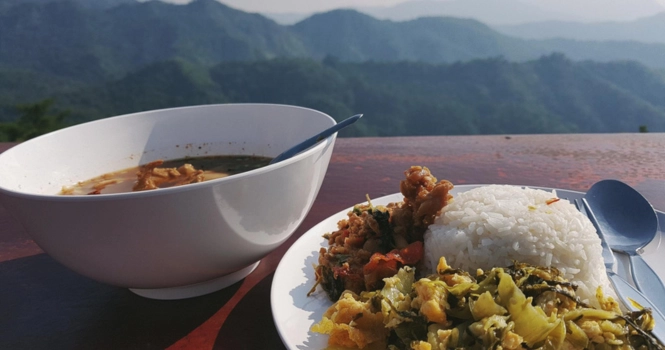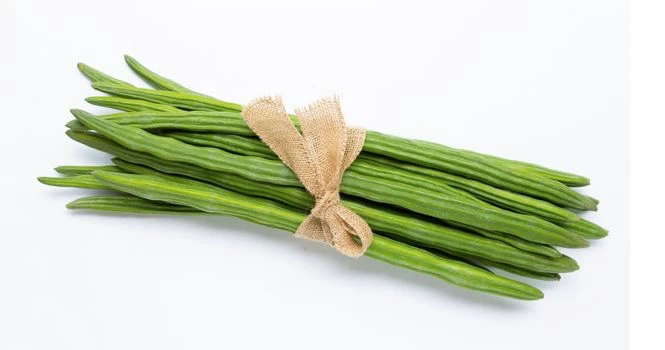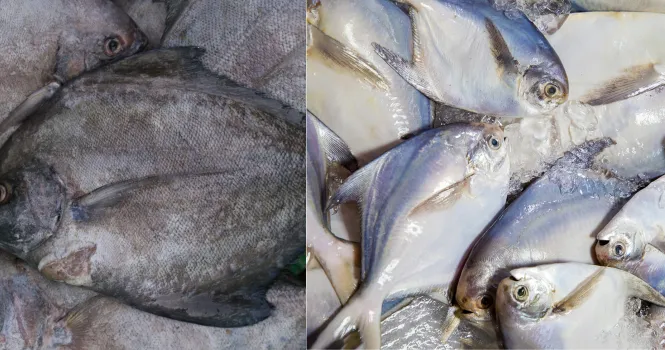Cooking rice at higher altitudes can be a challenging task due to the changes in atmospheric pressure.
As you ascend in elevation, the air pressure decreases, which affects the boiling point of water.
At sea level, water boils at 212°F (100°C), but with every increase in altitude, the boiling point drops slightly. This lower boiling point has a direct impact on cooking processes, including the preparation of rice.
The Science Behind It
At higher altitudes, since water boils at a lower temperature, it means that boiling water is less hot than it would be at sea level. Rice, like other foods cooked in boiling water, relies on a certain temperature to cook properly. When the water isn’t as hot, the rice cooks more slowly and may require a longer cooking time.
This can lead to several issues:
1. Longer Cooking Time: Rice grains need more time to absorb water and cook thoroughly, which can be inconvenient and energy-consuming.
2. Altered Texture: There’s a risk of the rice turning out harder or more al dente than desired because the lower temperature makes it difficult for the starches inside the rice grains to gelatinize, a process essential for making the rice soft and fluffy.
3. Increased Evaporation: The prolonged cooking time might lead to more water evaporating before the rice is fully cooked. This could necessitate adding more water during the cooking process to prevent the rice from drying out or burning.
Adjusting Cooking Methods
To combat these challenges, individuals cooking at high altitudes may need to adjust their cooking methods. This could involve using more water to account for increased evaporation, covering the cooking pot to retain more heat and moisture, or even soaking the rice before cooking to reduce the overall cooking time.
Solutions and Tips
Here are some tips to improve the outcome when cooking rice at higher altitudes:
- Soak the Rice: Soaking the rice for a while before cooking can help reduce cooking time by allowing the grains to absorb water in advance.
- Use a Pressure Cooker: Cooking under pressure can mitigate the effects of lower atmospheric pressure by raising the boiling point of water, thus cooking the rice at a higher temperature and more efficiently.
- Adjust Water Ratios: You may need to experiment with adding more water than usual to compensate for the faster evaporation rate.
- Be Patient: Allow for a longer cooking time and be prepared to adjust your cooking method through trial and error to find what works best at your specific altitude.
Cooking rice at higher altitudes presents unique challenges due to the reduced atmospheric pressure and lower boiling point of water.
By understanding the science behind these changes and adapting cooking methods accordingly, it’s possible to achieve perfectly cooked rice, even in the mountains.
Patience, experimentation, and a few adjustments in cooking techniques are key to overcoming the hurdles of high-altitude rice cooking.
Frequently Asked Questions
What is the ratio of rice to water at high altitude?
At high altitudes, the decreased atmospheric pressure causes water to boil at a lower temperature, which can affect the cooking process of rice by requiring more time and potentially more water to achieve the desired texture.
As a result, the standard rice-to-water ratio used at sea level might need adjustment.
Standard Ratio at Sea Level:
- For white rice: The typical ratio is about 1 part rice to 2 parts water.
- For brown rice: Since brown rice is denser, it usually requires more water, with a common ratio being 1 part rice to 2.5 parts water.
Adjusted Ratio for High Altitude:
At higher altitudes, you may need to increase the water amount to compensate for the faster evaporation rate due to prolonged cooking times. A general guideline for cooking rice at altitudes above 3,000 feet (about 914 meters) is to add an extra 1/4 to 1/2 cup of water for each cup of rice.
Therefore, the adjusted ratios might look something like this:
- For white rice: Start with a ratio of 1 part rice to 2.25 to 2.5 parts water.
- For brown rice: Use a ratio of 1 part rice to 2.75 to 3 parts water.
Additional Tips for High-Altitude Rice Cooking:
1. Check Consistency: Since altitude can affect cooking times and water absorption, it’s important to check the rice’s consistency towards the end of cooking and adjust by adding more water if necessary.
2. Soak the Rice: Consider soaking the rice before cooking to reduce overall cooking time and help with water absorption.
3. Use a Lid: Keep the pot covered while cooking to minimize water evaporation.
4. Experiment: Be prepared to adjust the water ratio based on your specific altitude, the type of rice, and your cooking method.
Remember, these ratios are starting points, and you may need to adjust based on your experience and specific conditions. Cooking at high altitudes often requires a bit of trial and error to find the perfect balance for your preferred rice texture.










